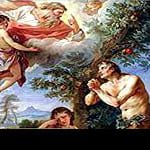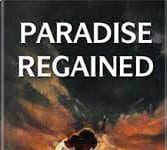Brajendranath Seal The Rime of the Wizard Knight | A Critical Analysis
Brajendranath Seal The Rime of the Wizard Knight
Brajendranath Seal The Rime of the Wizard Knight | A Critical Analysis
‘The Rime of the Wizard Knight’ by Brajendranath Seal is a literary ballad as Coleridge’s ‘Rime of the Ancient Marines or Keat’s La Dame Sans Merci’ is. The poem is a romantic one. This poem reveals the poet’s love and interest in the past world of nature full of beauty and romance. The poem has two distinct portions.
In the first portion, the poet gives a vivid sensuous romantic description of the woods where the wizard knight visited. The poet says that the ‘bracs’ (the steep hillside) of the woods were brightening while the sun shined. The ‘Shaws’ (the stalks and leaves of vegetables) seemed green and their leaves were dancing in the wind merrily. No summer tint was visible on the glen. Over the woods, the ghost of a dead white moon sailed and all the elements of the woods were enmeshed and so they were laying swooning. As the lightning sparkled and shed a gleam of light in the evening before raining so rill (streamlet) of the woods was flowing through the valley of the ‘glen’ (a narrow plain tract between the hills). The birds sitting on the ‘spray’ (the shoot of trees) folded their plumes as it was feeling cool with the setting of the sun. While the sunset was complete and it became dark then the elf of the woods appeared and seemed to whisper. It was the month of May and everyone seemed to be in a gay mood. The pallid ‘amethyst’ (a precious stone of bluish-violet colour) shone brightly. There, in such a state and in such a time, the wizard went and dreamt. He was alone and was musing on something.
After giving this sensuous description of nature, the poet goes on to say about the wizard knight and his activities done alone in the woods. In this second portion of the poem, the poet says that the knight crossing the rock fern and moss blew his bugle and being afraid of the sound of his bugle, the quivering leaves of trees stood still. The sound of his bugle was echoed in the mountain. Then the knight came down to the ravine and saw the bright light of an elf. The knight held his buggle fast and then heard the voice of the elf. Suddenly, the knight met the ghost of dark-red colour and thus he roamed about in the woods. The knight came back when the sun rose the next day.
The style of the poem may be called not to be easy as the language and some words and terms used in the poem are puzzling to interpret. The poet has used some unfamiliar words and phrases with their uncommon meanings as – baes, shaws, shimmerings, Levin, forest-world, cloud-banks wrought etc. 0 0 0
Brajendranath Seal The Rime of the Wizard Knight
Read More: The Poetry of Brajendranath Seal-Chief Features
N. B. This article entitled ‘Brajendranath Seal’s Poem ‘The Rime of the Wizard Knight’-A Critical Analysis’ originally belongs to the book ‘Indian English Poetry Criticism‘ by Menonim Menonimus. Brajendranath Seal The Rime of the Wizard Knight
Books of Literary Criticism by M. Menonimus:
- World Short Story Criticism
- World Poetry Criticism
- World Drama Criticism
- World Novel Criticism
- World Essay Criticism
- Indian English Poetry Criticism
- Indian English Poets and Poetry Chief Features
- Emily Dickinson’s Poetry-A Thematic Study
- Walt Whitman’s Poetry-A Thematic Study
- Critical Essays on English Poetry
- Tawfiq al-Hakim’s Novel: Return of the Spirit-An Analytical Study
- Tawfiq al-Hakim’s Novel: ‘Yawmiyyat Naib Fil Arayaf’-An Analytical Study
- Analytical Studies of Some Arabic Short Stories
- A Brief History of Arabic Literature: Pre-Islamic Period …
Books of Composition by M. Menonimus:
- Advertisement Writing
- Amplification Writing
- Note Making
- Paragraph Writing
- Notice Writing
- Passage Comprehension
- The Art of Poster Writing
- The Art of Letter Writing
- Report Writing
- Story Writing
- Substance Writing
- School Essays Part-I
- School Essays Part-II
- School English Grammar Part-I
- School English Grammar Part-II..
Related Searches:
- The Individual and Society-Guide Book
- The Individual and Society-DU Notes
- The Harp of India-Henry Derozio
- ‘To the Moon’-Henry Derozio
- Night of Slaughter Duryodhan’s Death
- Ramesh Chunder Dutt’s Poem ‘Sita Lost’
- The Wizard Knight’ …











